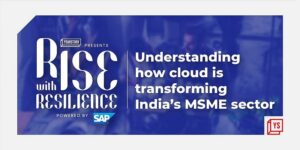There is no better feeling for a founder than seeing the idea they are passionate about come to life. However, putting a team together, planning for scale, and convincing investors to spend their coveted dollars on a business idea is a bit more complicated.
I put forward these thoughts from my past (hard) learnings of startup life, knowing fully well that founders today have never been more optimistic and excited about fundraising ever before — all because of the abundant availability of accessible growth capital in the market.
However, the fundamentals of building a strong and sustainable business have not changed. Here are the few things founders must consider carefully while planning scale and pitching to investors.
Right signals of a product-market-fit (PMF)
Building a good product for the targeted market is essential, but ensuring the right product-market-fit is even more critical to avoid unnecessary pivots in the future.
Most founders try to sell the promise of exponential growth on the back of a technologically superior product loaded with heavy features. However, it often falls flat as it doesn’t match the customer or market requirements.
Hence, they must consider the primary selling market and customer use cases before building a market-fit product.
Design the product keeping in mind the customer’s targeted ‘use case’ and the reasons for targeting such use cases. Then build the product and feature set suited for the outcome. This will lead to good product adoption.
Two signals founders can use to determine they have hit a good PMF is:
- Attracting customers from the primary target market (and not a test or pilot market)
- The rate of customer wins: Most founders think winning the first five or six customers is a successful PMF signal. It’s not about the first few customers but about the rate at which the business wins them in a repeated manner
Calibrating the fund/raise quantum
Most entrepreneurs are unsure about how much money they need to raise from investors to progress to the next growth phase, which mostly happens when they fail to correctly calibrate two significant costs — engineering and marketing.
Engineering cost
Founders should not overload their products with rich feature sets early in the startups’ lifecycle. Instead, they should look at relevant features that can be just enough to establish a good PMF and optimise the engineering costs.
Along with this, they should spend more time designing a modular blueprint of the product architecture and understand the most efficient way to build the product than hurriedly building it from all directions.
Marketing cost
As the adage goes, “We all know that half of our marketing budgets go to waste; the problem is that we don’t know which half.”
It is a safe strategy to keep the marketing budget focused on running multiple small-budget experiments in the startup’s early stages. Founders should focus on these experiments and gradually increase the budgets in areas (channels) they see success.
For this to happen, founders need to invest in tagging their marketing spending and return leads (MQLs/SQLs) across various channels. This will ensure the business gets the most out of its marketing spending, and ROI is seen in top-line growth.
Keeping these two costs in check in the initial phase will help founders get a better grip on their fundraising amounts. They should accommodate at least 12-15 months of burn-in in their fund need while talking to investors.
‘Right to play’ vs ‘Right to win’
Right to play is about having ‘enough’ in the product to participate in customer conversations and be part of the consideration set of vendors/deals in the targeted market. However, this does not ensure a good chance of winning the contract. For this, founders need to think a step beyond and build their products from a ‘Right to win’ mindset at the early stage itself.
Right to win is about having differentiated feature(s)/use cases in the product that makes it stand out against the competition. Importantly, the differentiated feature needs to be an integral part of the PMF and not an ancillary ‘good to have’ feature set that customers might get excited about but seldom use.
Such a differentiated feature can give the founders the much-needed beachhead to pierce into the market and build strong battle cards to ensure a good conversion in the sales funnel.
Not having a ‘North Star Metric’ (NSM) to track
Founders must ensure that all the functions in the organisation converge on a North Star Metric. A very common mistake is to peg top-line growth as the only NSM.
Revenues do not necessarily need to be the NSM of the company in the early phases. Metrics like sign-ups, top of funnel leads, sales conversions, etc., can prove to be a good NSM for early phase startups.
Founders should align their NSM with their go-to-market strategy, helping the company establish itself in the market in the most efficient manner.
Prioritising valuation over alignment with board members
This is the simplest yet the hardest to resist. In the early phases, founders should avoid optimising on valuations, instead should find good mentors as board members.
Most of the founders tend to rely on angel investors as their mentors. However, the most important decisions are taken in the boardroom. Hence, they must choose the right mentors who share their vision, business goals, and growth objectives, which helps in making the right decisions at the boardroom level.
This is the most integral, yet easy to overlook aspect of planning a startup’s internal structure. Since all strategic decisions are made during board meetings, it can have a major impact on growth and profitability.
In conclusion, keeping a sharp focus on these points could save the business from unnecessary pivots, and eventually, could a big difference in the 0-1 phase.
(Disclaimer: The views and opinions expressed in this article are those of the author and do not necessarily reflect the views of YourStory.)




![Read more about the article [Funding alert] DotPe secures $27.5M in Series A from PayU, Info Edge Ventures, Google](https://blog.digitalsevaa.com/wp-content/uploads/2021/03/funding-1615270729201-300x150.png)





